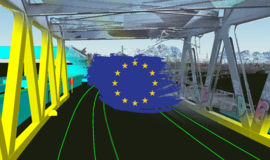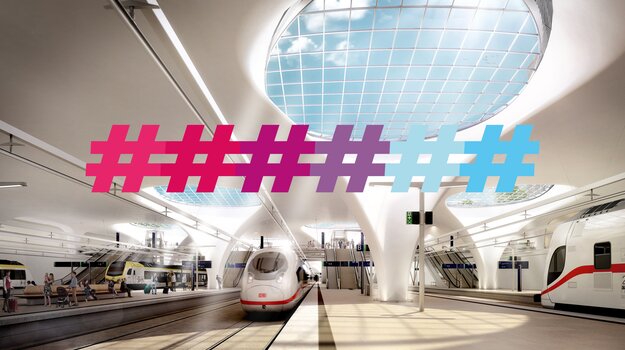
Digital register - Europe-wide infrastructure data for fully automated driving
Almost all key functionalities of the digital rail system require highly accurate, up-to-date and digitally available infrastructure data. This is why Digitale Schiene Deutschland is working intensively on a so-called "Digital Register (DR)". It is being specified and standardized as part of the European initiative Europe's Rail Joint Undertaking (ERJU). This should enable all European railroads to access compatible infrastructure data in the future
The Digital Register must provide data for various digital use cases. Source data is collected, validated and enriched for this purpose (details on how it works can be found here). It is already being used in various projects of Digitale Schiene Deutschland in the Digital Node Stuttgart and the Digital Test Field. The importance of the Digital Register has also been recognized by the European partners and is therefore a central component in the "Innovation Pillar" of the European ERJU programme.
The digital register is intended to ensure Europe-wide standardization of infrastructure data from all operators and the provision of standard interfaces for fully automated driving. The aim is interoperability in rail traffic. For this reason, the architecture of a generic digital register was developed as a first step (see figure). It consists of a track-side (DR-TS) and a vehicle-side (DR-OB) component. Both components supply infrastructure data to trackside and on-board systems.

As part of the ERJU project "R2DATO" (Rail to digital automated up to autonomous train operation), the digital register is being designed as a "single source of truth" for reliable, static infrastructure data. It is a crucial system for both safety-relevant and non-safety-relevant applications. In addition to providing reliable infrastructure data, the Digital Register also includes important functions such as data preparation, synchronization, versioning, activation and storage.
In a recent article in the magazine SIGNAL+DRAHT (06/24) you will find more information on the Europeanization of the Digital Register as well as a detailed overview of the ongoing pilot projects that are already using the Digital Register today.
Enjoy reading it!

